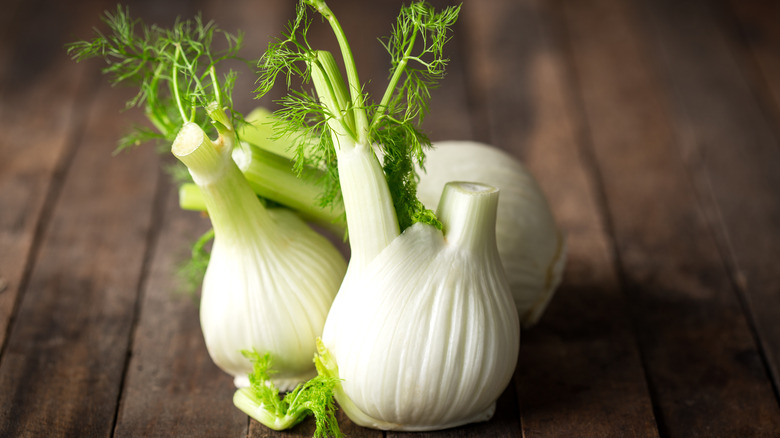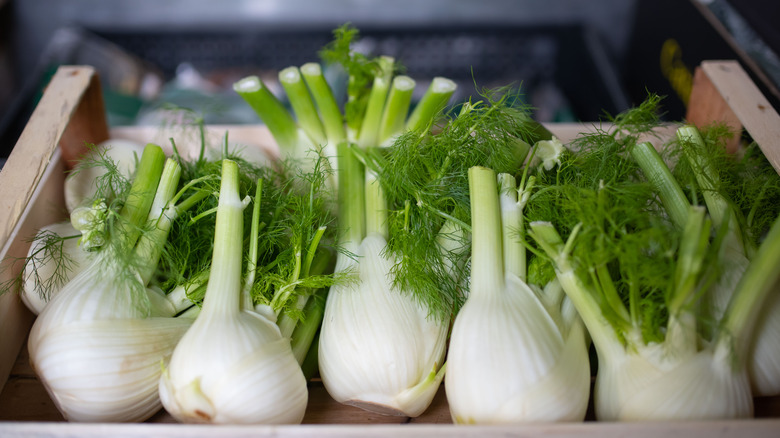What To Look For When Buying Fresh Fennel
Slightly herbaceous with a licorice-forward flavor, fennel may seem intimidating, but that couldn't be further from the truth. Bulbs, stalks, fronds, seeds, and even pollen can infuse flavor into any dish. Simply slice the bulb into a salad, roast the stalks in the oven, or use the fronds to make a pesto — the options are endless. However, before getting creative in the kitchen, starting with quality produce is essential.
Native to southern Europe, Wisconsin Horticulture explains that fennel is actually part of the apiaceae family, just like carrots, parsnips, celery, and anise. That said, it's no surprise that fennel and anise both share a similar compound called anethole, which gives the vegetables their distinct licorice flavor. Aside from taste, fennel can also be praised from a nutrition standpoint. In fact, Healthline shares that the bulbous veggie provides a significant amount of manganese, potassium, magnesium, and calcium, in addition to vitamin C, which can support immune health, tissue repair, and act as an antioxidant to protect against cellular damage.
If fennel is starting to pique your curiosity, then all it takes to track down the perennial herb is a trip to your local grocer or farmer's market. With a few simple tips, you can buy fresh fennel like a pro.
Reach for tightly-packed, pearly bulbs
Like most produce, it's wise to avoid fennel that's gone brown, soft, or bruised. Instead, the LA Times recommends opting for bright, pearly bulbs with firm green stalks and feathery fronds. Given that the longer fennel sits on display at the market, the more likely it is to wilt, a tightly-packed bulb is not only an indication of quality — it's also a guarantee of crunch, something that's characteristic of fresh, raw fennel.
However, because not all fennel is created equal (several different common and sweet cultivars exist), size isn't a reliable way to determine quality. That said, shape does make a difference. The Produce Nerd advises that thick and rounded, white bulbs tend to be juicier and more aromatic than thinner, yellowy bulbs that may instead be past their prime.
As far as storage goes, the shelf life of fennel can be greatly extended if each part of the vegetable is kept separately. Although stalks and fronds can be stored in a jar of water like a flower bouquet, MasterClass recommends keeping bulbs, along with stalks and fronds in different airtight containers in the fridge for up to 10 days or until signs of spoilage.

